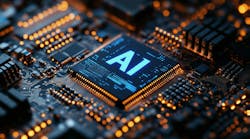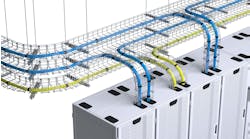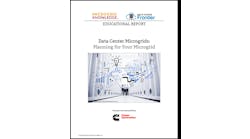The Importance of Data Center Infrastructure Management and System Monitoring
In this week’s Voices of the Industry, Bryon Miller, Senior Vice President of Operations at FORTRUST, discusses the 5 critical components of a Data Center Infrastructure Management and Systems Monitoring.
Byron Miller, Sr. VP of Operations at FORTRUST
In the current data center landscape, infrastructure management and system monitoring go hand in hand. As demands for colocation and managed data center services increase – a January 2016 report from Research and Markets predicted that the global colocation market will expand from 2015’s $25.7 billion to more than $54 billion by 2020 – ensuring the efficient performance of critical environments will only become more of a priority.
Effective Data Center Infrastructure Management (DCIM) and system monitoring strategies not only ensure that resources are utilized to the fullest, but can also help to mitigate human error and other causes of downtime. In addition, these monitoring systems can help facility managers deal with the rising complexity of current customer environments.
Let’s take a look at what robust DCIM and system monitoring looks like.
Begin at the beginning: Identifying infrastructure components
It’s important to ensure that all data center staff is on the same page when it comes to infrastructure components. FORTRUST Senior Vice President and General Manager Robert McClary noted in the eBook, “A Data Center Operations Guide for Maximum Reliability,” that it’s essential to develop uniform standards for the identification of infrastructure equipment. This includes electrical distribution, connectivity, access, security, mechanical and all other systems that are fundamental to data center operations.
These will lay the groundwork for DCIM and system monitoring processes.
Components of DCIM
According to DatacenterDynamics Intelligence and Anixter, there are five main components that should be included with DCIM and system monitoring considerations:
1. Asset management: Data center staff should have a robust understanding of the IT assets throughout the facility, including those in each customer environment. Effective asset management helps reduce hardware downtime, speed deployment time for new components and ensure the best use of available capacity.
2. Power monitoring: This results in a clear view of how energy is being utilized in the data center, as well as a better understanding of individual capacity needs and how to provision for those requirements.
3. Environmental monitoring: This includes the rack and power topology, relative temperature and humidity, capacity and failover alarms as well as historical trend data of each colocated environment.
4. Change management: Also known as workflow management, procedures related to change management help staff track any adjustments to colocated environments and how those impact overall operations.
5. Capacity planning: This includes forward-looking processes that rely on information gathered during asset management, power and environmental monitoring.
Monitoring for critical infrastructure systems
As noted, monitoring is a large part of overall DCIM. Not only do monitoring processes help data center staff have a better idea of current environment conditions and resource usage, but they can ensure they are able to plan for clients’ growing needs.
“All critical infrastructure systems should have comprehensive monitoring in place.” McClary recommended that all critical infrastructure systems have comprehensive monitoring in place.
“In an operations organization focused on uptime, monitoring systems become as important as the critical equipment within the systems,” McClary wrote. “Data center infrastructure management and monitoring systems alert personnel to changes or issues often before they become critical or possibly impact availability.”
The data gleaned through system monitoring provides facility staff with the ability to be proactive in their management, addressing issues before they become large-scale problems that can impact the data center’s continuous critical systems uptime.
Submitted by Bryon Miller. Bryon brings more than 30 years of management experience to his role at FORTRUST and is the longest tenured employee at the company. As Senior Vice President of Operations, Bryon provides direct oversight for all aspects of data center operations including security, IT services, facilities, sales engineering, service delivery, 7X24 operations center, construction management, purchasing, and all systems implementation and monitoring. Bryon is heavily involved in developing the organization’s processes and procedures. Additionally, he is responsible for FORTRUST’s extensive customized Data Center Infrastructure Management (DCIM) systems. Bryon was designated as an Accredited Tier Specialist (ATS) by the Uptime Institute in 2011.
FORTRUST COLOVIEW® technology enables clients to have an in-depth view of their environment. COLOVIEW® offers a range of real-time data points, including details about configuration, average temperature and relative humidity for the custom environment, as well as alarms for circuit capacity and redundant failover. Clients can also gain visibility into real-time and historical trends about resource usage and other environment specifics.
To see FORTRUST’s DCIM and system monitoring strategies first hand, contact us for a tour of our Denver data center today.





